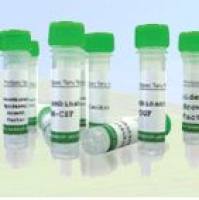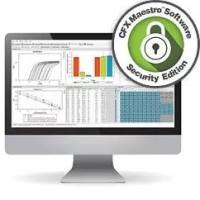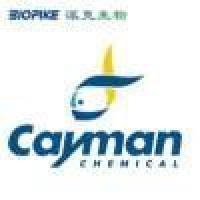【资源】Electrophoresis in Practice 4th edition
丁香园论坛
2264
在蛋白版学习了这么长时间,很感谢各位战友的指导,今天发本书,搜了艘园子里好像没有,也算回报园子里的战友了。
书名:Electrophoresis in Practice 4th edition
出版公司:WILEY 2005
书在56的共享里。邮箱号是:ronan0625@56.com
内容:本人水平有限,把目录发一下,最近自己也在看,学习中。感觉这本书内容很全。还有就是这本书很大的特色在于正文旁边都有实验过程的文献出处及疑难解释,很方便。
Part I Fundamentals 1
Introduction 3
1 Electrophoresis 9
1.0 General 9
1.1 Electrophoresis in non-restrictive gels 17
1.1.1 Agarose gel electrophoresis 17
1.1.2 Polyacrylamide gel electrophoresis of low-molecular weight
substances 20
1.2 Electrophoresis in restrictive gels 21
1.2.1 The Ferguson plot 21
1.2.2 Agarose gel electrophoresis 22
1.2.3 Polyacrylamide gel electrophoresis of nucleic acids 24
1.2.4 Polyacrylamide gel electrophoresis of proteins 34
2 Isotachophoresis 45
2.1 Migration with the same speed 45
2.2 “Ion train” separation 47
2.3 Zone sharpening effect 47
2.4 Concentration regulation effect 47
3 Isoelectric focusing 51
3.1 Principles 51
3.2 Gels for IEF 53
3.3 Temperature 54
3.4 Controlling the pH gradient 54
3.5 The kinds of pH gradients 55
3.5.1 Free carrier ampholytes 55
3.5.2 Immobilized pH gradients 59
3.6 Protein detection in IEFgels 62
3.7 Preparative isoelectric focusing 62
3.8 Titration curve analysis 64
4 Blotting 67
4.1 Principle 67
4.2 Transfer methods 68
4.2.1 Diffusion blotting 68
4.2.2 Capillary blotting 68
4.2.3 Pressure blotting 68
4.2.4 Vacuum blotting 69
4.2.5 Electrophoretic blotting 70
4.3 Blotting membranes 72
4.4 Buffers for electrophoretic transfers 73
4.5 General staining 75
4.6 Blocking 75
4.7 Specific detection 76
4.8 Protein sequencing 78
4.9 Transfer problems 79
5 Interpretation of electropherograms 81
5.1 Introduction 81
5.1.1 Purity control 81
5.1.2 Quantification prerequisites 81
5.2 Image analysis 83
5.2.1 Hardware for image analysis 84
5.2.2 Software for image analysis 87
6 Proteome Analysis 91
6.1 General 91
6.2 Sample preparation 96
6.3 Two-dimensional electrophoresis 100
6.4 Detection techniques 102
6.5 Image analysis 107
6.6 Protein spot identification 109
6.6.1 Mass spectrometry methods 111
6.6.2 Peptide mass fingerprinting 116
6.6.3 Protein characterization 118
6.7 Bioinformatics 118
6.8 Functional proteomics 119
7 Instrumentation 121
7.1 Current and voltage conditions 121
7.2 Power supply 123
7.3 Separation chambers 124
7.3.1 Vertical apparatus 124
7.3.2 Horizontal apparatus 125
7.4 Staining apparatus for gels and blots 128
7.5 Automated electrophoresis 128
7.6 Instruments for 2-D electrophoresis 130
7.6.1 Isoelectric focusing apparatus 130
7.6.2 Multiple slab gel apparatus 131
7.7 Safety measures 131
7.8 Environmental aspects 132
Part II Equipment and Methods 133
Equipment for Part II 135
Instrumentation 136
Special laboratory equipment 138
Consumables 139
Chemicals 140
Method 1: PAGE of dyes 145
1 Sample preparation 145
2 Stock solutions 145
3 Preparing the casting cassette 146
4 Casting ultrathin-layer gels 148
5 Electrophoretic separation 149
Method 2: Agarose and immuno electrophoresis 151
1 Sample preparation 151
2 Stock solutions 152
3 Preparing the gels 152
4 Electrophoresis 157
5 Protein detection 159
Method 3: Titration curve analysis 163
1 Sample preparation 163
2 Stock solutions 164
3 Preparing the blank gels 164
4 Titration curve analysis 167
5 Coomassie and silver staining 170
6 Interpreting the curves 172
Method 4: Native PAGE in amphoteric buffers 175
1 Sample preparation 176
2 Stock solutions 177
3 Preparing the empty gels 178
4 Electrophoresis 182
5 Coomassie and silver staining 185
Method 5: Agarose IEF 189
1 Sample preparation 189
2 Preparing the agarose gel 190
3 Isoelectric focusing 193
4 Protein detection 195
Method 6: PAGIEF in rehydrated gels 197
1 Sample preparation 198
2 Stock solutions 198
3 Preparing the blank gels 199
4 Isoelectric focusing 201
5 Coomassie and silver staining 204
6 Perspectives 208
Method 7: Horizontal SDS-PAGE 211
1 Sample preparation 211
2 Stock solutions for gel preparation 215
3 Preparing the casting cassette 216
4 Gradient gel 218
5 Electrophoresis 221
6 Protein detection 224
7 Blotting 227
8 Perspectives 227
Method 8: Vertical PAGE 231
1 Sample preparation 232
2 Stock solutions 233
3 Single gel casting 233
4 Multiple gel casting 237
5 Electrophoresis 241
6 SDS electrophoresis of small peptides 242
7 Two-dimensional electrophoresis 244
8 DNA electrophoresis 244
9 Long shelflife gels 245
10 Detection of bands 245
Method 9: Semi-dry blotting of proteins 247
1 Transfer buffers 248
2 Technical procedure 249
3 Staining of blotting membranes 253
Method 10: IEF in immobilized pH gradients 257
1 Sample preparation 258
2 Stock solutions 258
3 Immobiline recipes 259
4 Preparing the casting cassette 262
5 Preparing the pH gradient gels 264
6 Isoelectric focusing 269
7 Staining 271
8 Strategies for IPG focusing 273
Method 11: High-resolution 2-D electrophoresis 275
1 Sample preparation 276
2 Stock solutions 279
3 Preparing the gels 280
4 Separation conditions 285
5 Staining procedures 293
Method 12: PAGE of double stranded DNA 299
1 Stock solutions 300
2 Preparing the gels 301
3 Sample preparation 305
4 Electrophoresis 305
5 Silver staining 310
Method 13: Native PAGE of single stranded DNA 313
1 Sample treatment 315
2 Gel properties 316
3 Buffers and additives 317
4 Conditions for electrophoresis 318
5 Strategy for SSCP analysis 318
Method 14: Denaturing gradient gel electrophoresis 321
1 Sample preparation 322
2 Rehydration solutions 322
3 Preparing the rehydration cassette 323
4 Rehydration 325
5 Electrophoresis 327
6 Silver staining 329
Method 15: Denaturing PAGE of DNA 331
1 Sample preparation 332
2 Solutions 333
3 Rehydration 333
4 Electrophoresis 334
5 Silver staining 337
Appendix Trouble-shooting 339
A1 Isoelectric focusing 339
A1.1 PAGIEFwith carrier ampholytes 339
A1.2 Agarose IEFwith carrier ampholytes 348
A1.3 Immobilized pH gradients 352
A2 SDS electrophoresis 359
A3 Vertical PAGE 369
A4 Semidry blotting 371
A5 2-D electrophoresis 379
A6 DNA electrophoresis 385
References 389
Index 399
书名:Electrophoresis in Practice 4th edition
出版公司:WILEY 2005
书在56的共享里。邮箱号是:ronan0625@56.com
内容:本人水平有限,把目录发一下,最近自己也在看,学习中。感觉这本书内容很全。还有就是这本书很大的特色在于正文旁边都有实验过程的文献出处及疑难解释,很方便。
Part I Fundamentals 1
Introduction 3
1 Electrophoresis 9
1.0 General 9
1.1 Electrophoresis in non-restrictive gels 17
1.1.1 Agarose gel electrophoresis 17
1.1.2 Polyacrylamide gel electrophoresis of low-molecular weight
substances 20
1.2 Electrophoresis in restrictive gels 21
1.2.1 The Ferguson plot 21
1.2.2 Agarose gel electrophoresis 22
1.2.3 Polyacrylamide gel electrophoresis of nucleic acids 24
1.2.4 Polyacrylamide gel electrophoresis of proteins 34
2 Isotachophoresis 45
2.1 Migration with the same speed 45
2.2 “Ion train” separation 47
2.3 Zone sharpening effect 47
2.4 Concentration regulation effect 47
3 Isoelectric focusing 51
3.1 Principles 51
3.2 Gels for IEF 53
3.3 Temperature 54
3.4 Controlling the pH gradient 54
3.5 The kinds of pH gradients 55
3.5.1 Free carrier ampholytes 55
3.5.2 Immobilized pH gradients 59
3.6 Protein detection in IEFgels 62
3.7 Preparative isoelectric focusing 62
3.8 Titration curve analysis 64
4 Blotting 67
4.1 Principle 67
4.2 Transfer methods 68
4.2.1 Diffusion blotting 68
4.2.2 Capillary blotting 68
4.2.3 Pressure blotting 68
4.2.4 Vacuum blotting 69
4.2.5 Electrophoretic blotting 70
4.3 Blotting membranes 72
4.4 Buffers for electrophoretic transfers 73
4.5 General staining 75
4.6 Blocking 75
4.7 Specific detection 76
4.8 Protein sequencing 78
4.9 Transfer problems 79
5 Interpretation of electropherograms 81
5.1 Introduction 81
5.1.1 Purity control 81
5.1.2 Quantification prerequisites 81
5.2 Image analysis 83
5.2.1 Hardware for image analysis 84
5.2.2 Software for image analysis 87
6 Proteome Analysis 91
6.1 General 91
6.2 Sample preparation 96
6.3 Two-dimensional electrophoresis 100
6.4 Detection techniques 102
6.5 Image analysis 107
6.6 Protein spot identification 109
6.6.1 Mass spectrometry methods 111
6.6.2 Peptide mass fingerprinting 116
6.6.3 Protein characterization 118
6.7 Bioinformatics 118
6.8 Functional proteomics 119
7 Instrumentation 121
7.1 Current and voltage conditions 121
7.2 Power supply 123
7.3 Separation chambers 124
7.3.1 Vertical apparatus 124
7.3.2 Horizontal apparatus 125
7.4 Staining apparatus for gels and blots 128
7.5 Automated electrophoresis 128
7.6 Instruments for 2-D electrophoresis 130
7.6.1 Isoelectric focusing apparatus 130
7.6.2 Multiple slab gel apparatus 131
7.7 Safety measures 131
7.8 Environmental aspects 132
Part II Equipment and Methods 133
Equipment for Part II 135
Instrumentation 136
Special laboratory equipment 138
Consumables 139
Chemicals 140
Method 1: PAGE of dyes 145
1 Sample preparation 145
2 Stock solutions 145
3 Preparing the casting cassette 146
4 Casting ultrathin-layer gels 148
5 Electrophoretic separation 149
Method 2: Agarose and immuno electrophoresis 151
1 Sample preparation 151
2 Stock solutions 152
3 Preparing the gels 152
4 Electrophoresis 157
5 Protein detection 159
Method 3: Titration curve analysis 163
1 Sample preparation 163
2 Stock solutions 164
3 Preparing the blank gels 164
4 Titration curve analysis 167
5 Coomassie and silver staining 170
6 Interpreting the curves 172
Method 4: Native PAGE in amphoteric buffers 175
1 Sample preparation 176
2 Stock solutions 177
3 Preparing the empty gels 178
4 Electrophoresis 182
5 Coomassie and silver staining 185
Method 5: Agarose IEF 189
1 Sample preparation 189
2 Preparing the agarose gel 190
3 Isoelectric focusing 193
4 Protein detection 195
Method 6: PAGIEF in rehydrated gels 197
1 Sample preparation 198
2 Stock solutions 198
3 Preparing the blank gels 199
4 Isoelectric focusing 201
5 Coomassie and silver staining 204
6 Perspectives 208
Method 7: Horizontal SDS-PAGE 211
1 Sample preparation 211
2 Stock solutions for gel preparation 215
3 Preparing the casting cassette 216
4 Gradient gel 218
5 Electrophoresis 221
6 Protein detection 224
7 Blotting 227
8 Perspectives 227
Method 8: Vertical PAGE 231
1 Sample preparation 232
2 Stock solutions 233
3 Single gel casting 233
4 Multiple gel casting 237
5 Electrophoresis 241
6 SDS electrophoresis of small peptides 242
7 Two-dimensional electrophoresis 244
8 DNA electrophoresis 244
9 Long shelflife gels 245
10 Detection of bands 245
Method 9: Semi-dry blotting of proteins 247
1 Transfer buffers 248
2 Technical procedure 249
3 Staining of blotting membranes 253
Method 10: IEF in immobilized pH gradients 257
1 Sample preparation 258
2 Stock solutions 258
3 Immobiline recipes 259
4 Preparing the casting cassette 262
5 Preparing the pH gradient gels 264
6 Isoelectric focusing 269
7 Staining 271
8 Strategies for IPG focusing 273
Method 11: High-resolution 2-D electrophoresis 275
1 Sample preparation 276
2 Stock solutions 279
3 Preparing the gels 280
4 Separation conditions 285
5 Staining procedures 293
Method 12: PAGE of double stranded DNA 299
1 Stock solutions 300
2 Preparing the gels 301
3 Sample preparation 305
4 Electrophoresis 305
5 Silver staining 310
Method 13: Native PAGE of single stranded DNA 313
1 Sample treatment 315
2 Gel properties 316
3 Buffers and additives 317
4 Conditions for electrophoresis 318
5 Strategy for SSCP analysis 318
Method 14: Denaturing gradient gel electrophoresis 321
1 Sample preparation 322
2 Rehydration solutions 322
3 Preparing the rehydration cassette 323
4 Rehydration 325
5 Electrophoresis 327
6 Silver staining 329
Method 15: Denaturing PAGE of DNA 331
1 Sample preparation 332
2 Solutions 333
3 Rehydration 333
4 Electrophoresis 334
5 Silver staining 337
Appendix Trouble-shooting 339
A1 Isoelectric focusing 339
A1.1 PAGIEFwith carrier ampholytes 339
A1.2 Agarose IEFwith carrier ampholytes 348
A1.3 Immobilized pH gradients 352
A2 SDS electrophoresis 359
A3 Vertical PAGE 369
A4 Semidry blotting 371
A5 2-D electrophoresis 379
A6 DNA electrophoresis 385
References 389
Index 399








